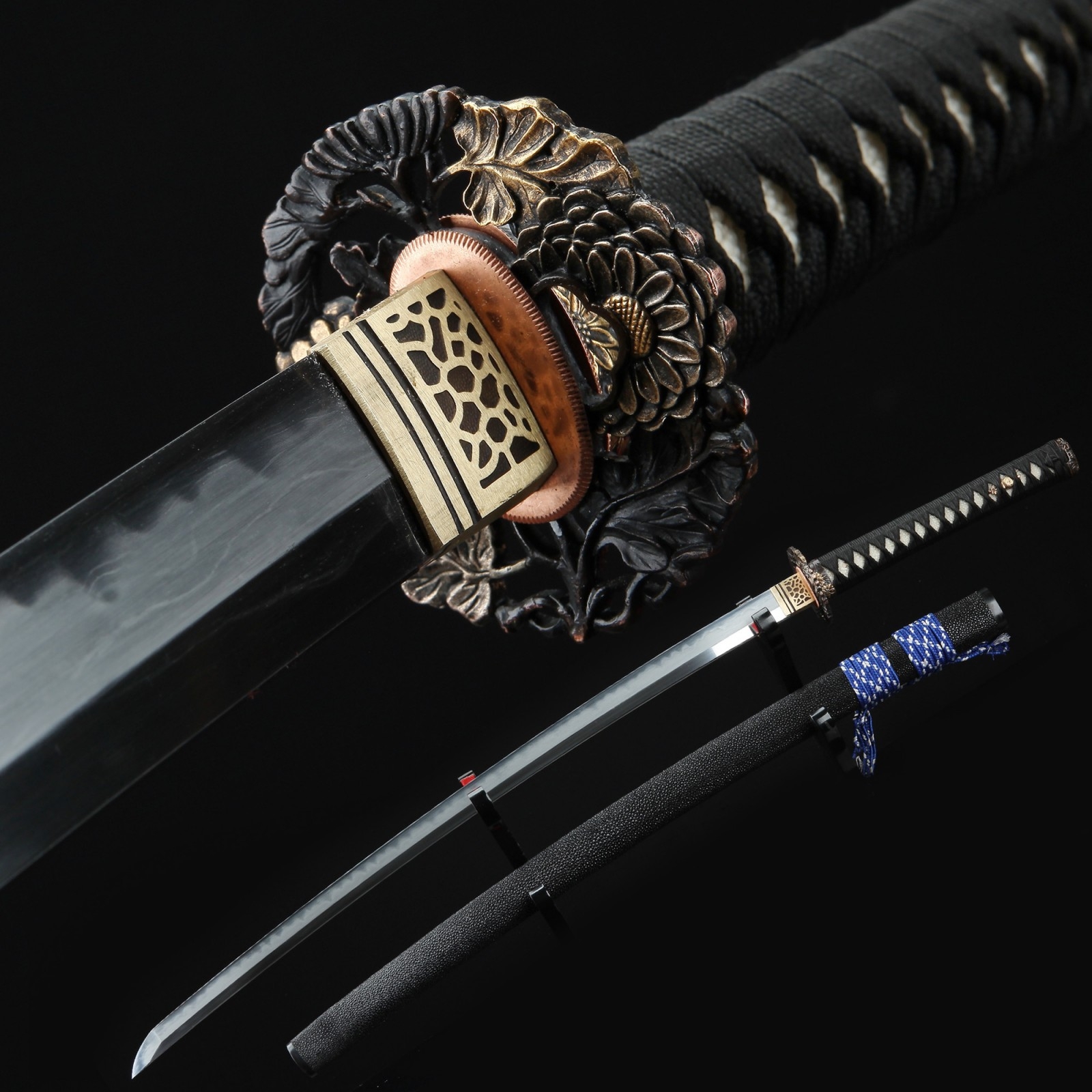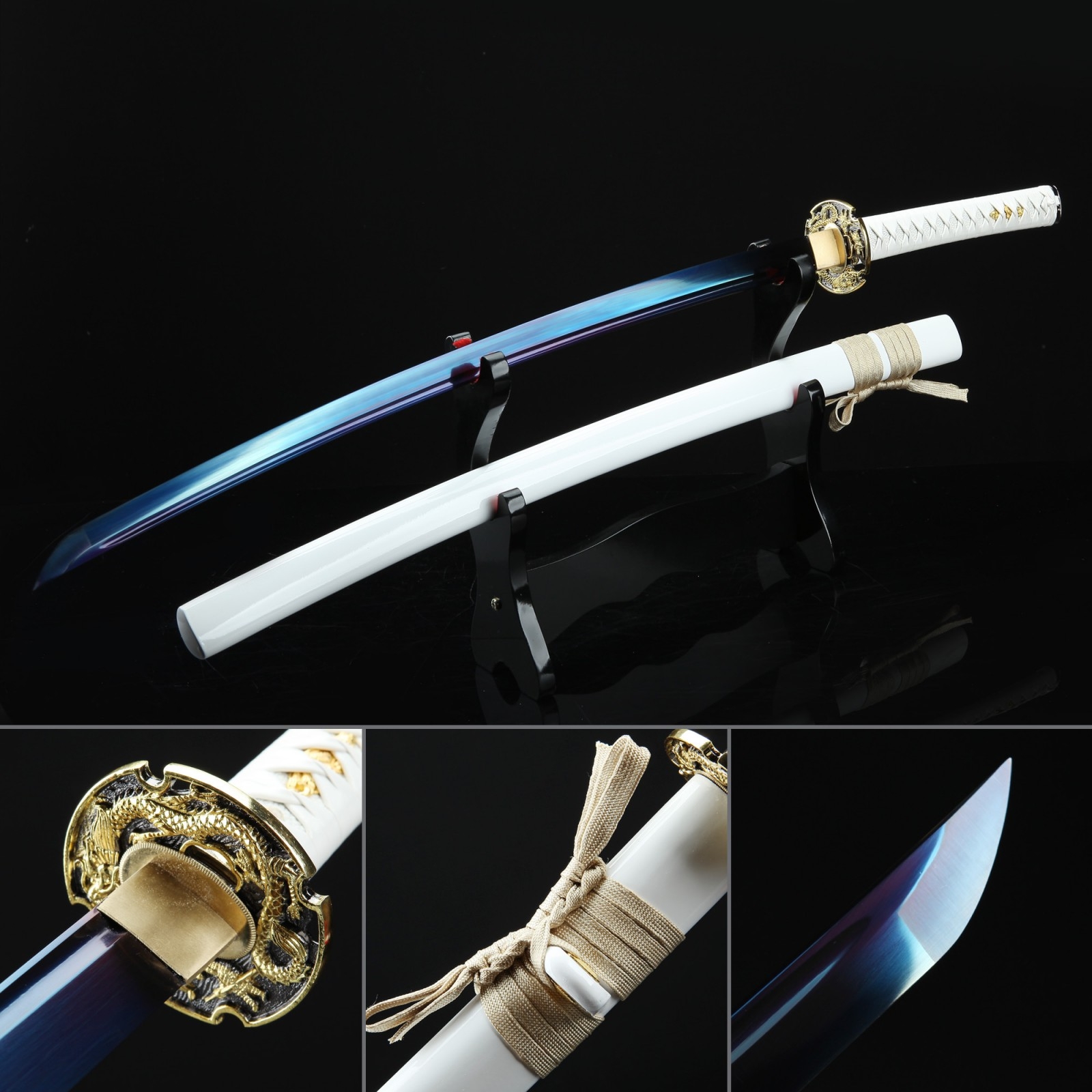

A common misconception is that swords should all be “razor sharp”. Moderately Sharp is close, but may need to be touched up to get the best performance. Possible values could be “Rebated” meaning the edge is intentionally thickened for safety, “Blunt” meaning the edge is fairly thick with little to no taper, ‘Unsharpened” which would taper to the edge but stop short of having any real cutting ability, “Slightly Sharp, Moderately Sharp, Sharp, or Very Sharp” Sharp or Very Sharp are considered good for cutting swords. The “Edge” spec will tell you about how sharp a blade is. This info is provided to give you a good idea of the product being presented, the one you receive may vary from the specific one we took measurements of. Please note: Due to the hand made nature of these items, all specs should be considered as approximates. A very high POB will result in a sword that feels heavier than it actually is and is difficult to wield.

In general, a low POB results in good point control well suited to a thrusting blade, while a higher POB adds impact to a cleaving blade. A POB of 3”- 5” usually results in a well balanced sword, but does depend on the type of sword. In practice however, there are many reasons why you may not want this for a particular sword. In theory a sword with a POB of 0” is perfectly balanced. A number of 0” would balance exactly at the guard, while a negative number will have a POB in the hilt itself. It refers to the point on the blade where the sword achieves a perfect balance.

stands for Point Of Balance, this is measured in inches from the hilt down the blade. The softer spine of the blade also has a tendency to take a bend if a poor cut is made against a target, requiring it to be straightened again by a professional. While this traditional method does make a blade with a fine and hard edge the drawbacks are that this edge is more brittle than a softer through-hardened edge and make it more likely to chip or take damage when struck against a hard or dense target.

In addition to this the polishing of the blade will reveal a wave-like hamon line that denotes the border between the differentially-hardened regions of the blade. This results in the blade having two separate levels of hardness the edge will be harder steel which will better hold a sharp edge and the body will be softer and have some shock-absorbing properties. The thin layer along the edge will flash cool the edge and the thicker clay on the body and spine will slow its cooling. Before quenching the blade the swordsmith will coat it with clay and the varying thickness of the clay will determine how quickly the blade will cool when quenching. In contrast to through-tempered, this is the traditional method for tempering the Japanese sword. Pouring his body and soul into the process, Fusahiro forges and hammers this steel to produce each masterpiece sword.What does it mean when a katana is differentially-tempered? Fusahiro starts with the raw materials, melting iron sand to create solid metal, which he then forges multiple times, extracting its impurities to produce ‘tamahagane’, a steel of the highest quality. Traditionally these swords were enshrined in Japanese homes to ward off evil, a practice which in some places continues till this day. The type of sword that Fusahiro makes is the mamori katana, a special talisman sword that serves as a spiritual safeguard for its owner. You can also view Fusahiro’s website here (Japanese only). In recognition of his remarkable work, Fusahiro has been recently interviewed by CNN. For the past 24 years, Fusahiro has devoted himself to making samurai swords, and at age 44, has emerged as one of the world’s foremost katana sword-makers. In his Saitama studio, Fusahiro passionately crafts each katana using traditional methods, responding to custom requests from clients from Japan and across the globe. This early encounter inspired Fusahiro to join the ranks of the only 150 or so katana swordsmiths in Japan. Facing the 800-year old sword, gleaming in the dark museum, Fusahiro was struck by its pristine condition, testament to its craftsmanship and the legacy of all those who had cared for it across generations. It was as a teenager that Fusahiro first saw a katana in person. We’re incredibly excited to announce our representation of Fusahiro Shimojima’s katana sales to foreign and non-Japanese speaking customers.


 0 kommentar(er)
0 kommentar(er)
